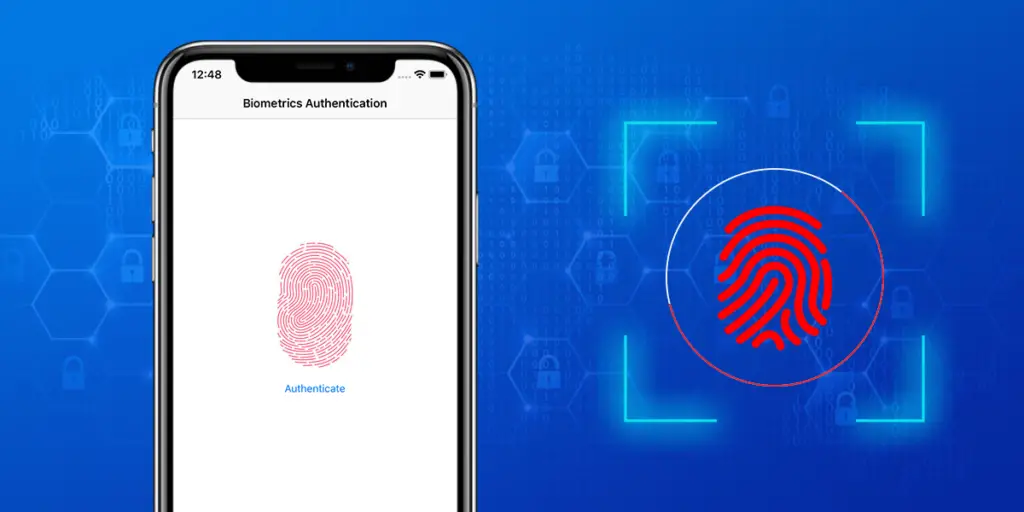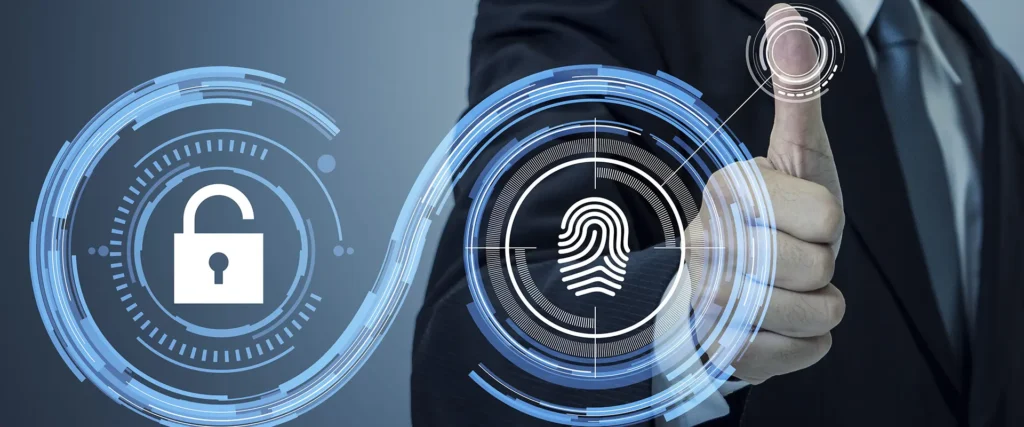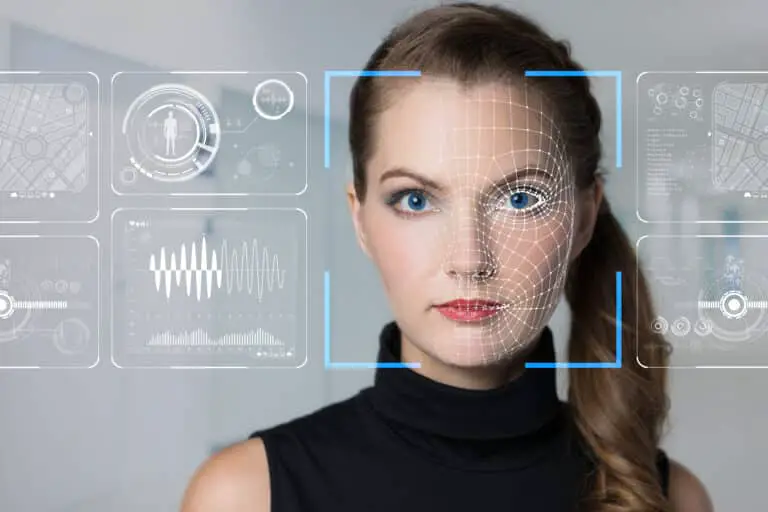Introduction
How Does Biometric Authentication Work: The need for secure and convenient authentication methods is paramount, biometric authentication has emerged as a revolutionary solution. Biometric safer authentication harnesses the uniqueness of individual biological traits to provide secure access to devices, systems, and sensitive information. This innovative approach not only eliminates the need for traditional password-based methods but also enhances security by utilizing features like fingerprints, facial characteristics, iris patterns, voiceprints, and even behavioral traits. Understanding how biometric authentication works is pivotal in appreciating the blend of technology and biology that underpins this cutting-edge security paradigm. This article delves into the fascinating realm of biometric authentication, exploring the underlying mechanisms, its applications across various domains, and the challenges and benefits associated with its implementation.
The rapid integration of technology into our daily lives, the quest for robust and user-friendly security measures has led to the rise of biometric authentication. This ingenious approach leverages the distinctive biological attributes that set each individual apart, transforming these unique traits into digital keys that grant access to a myriad of devices and systems. Departing from the vulnerabilities of traditional password-based systems, biometric authentication relies on physiological and behavioral characteristics, such as fingerprints, facial features, voice patterns, and even the nuances of typing rhythms.
This fusion of cutting-edge technology and intricate biological markers has revolutionized the landscape of digital security, offering a tantalizing glimpse into a future where convenience meets unparalleled protection. In the following exploration, we unravel the mechanics behind biometric authentication, its diverse applications across industries, and the compelling advantages and challenges that accompany its deployment.

How does biometric authentication work on phone?
In simple terms, mobile biometric authentication is a form of authentication that uses biometrics to detect and authenticate the identity of the user trying to access a mobile app. It can be performed using multiple ways including fingerprint readers, facial recognition, voice recognition,
The Mechanics Behind Biometric Authentication
Biometric authentication on phones relies on the use of distinctive biological traits that are nearly impossible to replicate or forge. The most common biometric identifiers used on smartphones include fingerprints, facial features, and sometimes even iris patterns or voiceprints.
Fingerprint Authentication
Fingerprint authentication, often integrated into a phone’s home button or the back of the device, relies on the analysis of the ridges and valleys on a person’s fingertip
Facial Recognition
Facial recognition technology employs advanced algorithms to analyze and map an individual’s facial features, including distances between key points, like the eyes, nose, and mouth.
What are the three steps of biometrics authentication process?
The process involves three steps: enrollment, live sample and comparison. Here’s a quick overview of each. This step prepares the smart card for use and pairs the person with the card
Enrollment
The first step in biometric authentication is enrollment. During this phase, the individual’s chosen biometric identifier, such as a fingerprint, facial scan, or voice sample, is captured and converted into a digital template. This template essentially encapsulates the distinctive features of the chosen biometric trait.
Storage and Template Creation
Once the biometric data is captured during enrollment, it is processed and transformed into a digital template. This template is a compact representation of the individual’s biometric traits that retains the necessary information for comparison during subsequent authentication attempts.
Authentication
Authentication is the final step in the biometric authentication process. When an individual attempts to access a device, system, or data, the biometric sensor captures their biometric trait again. The comparison process involves complex algorithms that assess the level of similarity between the captured and stored templates.
What are 5 main types of biometric authentication?
- In this article we consider the pros and cons of all these different techniques for biometric security.
- Fingerprint recognition.
- Facial recognition.
- Iris recognition.
- Finger vein pattern recognition. …
- Palm vein pattern recognition.
Fingerprint Recognition
Fingerprint recognition is one of the most well-known and widely used biometric authentication methods. It leverages the unique patterns of ridges and valleys on an individual’s fingertip to create a distinct fingerprint template. Fingerprint recognition is popular due to its accuracy, ease of use, and the fact that everyone has distinct fingerprints.
Facial Recognition
Facial recognition technology analyzes the features of an individual’s face to create a facial template. It measures various facial landmarks such as the distance between eyes, nose shape, and mouth dimensions. Front-facing cameras capture the face, and advanced algorithms compare the captured template to the stored one for authentication. Facial recognition is user-friendly and can work from a distance, making it suitable for a variety of applications.
Iris Recognition
Recognition involves analyzing the unique patterns in the colored part of the eye, known as the iris. Iris patterns are highly distinctive and remain stable over time. This method offers high accuracy and is less affected by external factors such as lighting conditions.
Is biometric authentication 100% accurate?
Sample sizes need to be large enough to capture large scale image quality variations. Probability of detection with the highest score in a gallery of 10,000 fingerprints is 90% and for face it is 77% for the best tested face recognition system.
Achieving High Accuracy
Efforts to enhance the accuracy of biometric authentication are ongoing. Manufacturers and developers invest in improving sensor technology, algorithms, and data processing techniques to reduce false positives and negatives. Regular updates to biometric systems help address vulnerabilities and adapt to changes over time.
Ethical and Privacy Considerations
While aiming for high accuracy, it’s important to consider the ethical and privacy implications of biometric authentication. Collecting and storing biometric data raises concerns about its potential misuse, as well as the need to ensure user consent, data protection, and the prevention of discriminatory practices.
The Realistic Expectation
While biometric authentication offers a robust and convenient security solution, achieving 100% accuracy is a challenging goal due to the factors mentioned above. The focus is on achieving a balance between security, usability, and privacy. Biometric authentication’s strength lies in its ability to provide significantly higher accuracy and security compared to traditional methods, even if it may not be flawless.
Are biometrics easy to hack?
Can biometric data be hacked? There is no such thing as foolproof security, including biometric data. While it is true that biometric data is more secure than other forms of identification, such as a password or PIN, determined hackers can find a way to bypass biometric security measures.
The Challenges of Hacking Biometrics:
Uniqueness: Biometric traits are inherently unique to individuals, making it difficult for hackers to replicate them accurately.
Non-transferable: Unlike passwords that can be shared, biometric traits are not easily transferable. You can change your password, but altering your biometric trait is impossible, providing an additional layer of security.
Dynamic Characteristics: Some biometric traits, such as behavioral characteristics like typing rhythm or voice tone, are difficult to predict or replicate due to their dynamic nature.
Physical Presence: Biometric authentication typically requires the user’s physical presence, preventing remote attacks. For example, fingerprint or facial recognition systems generally require the individual to physically interact with the device.
Is fingerprint safer than password?
For nearly all people, it is much safer to use fingerprint or face scans to secure your devices and accounts than using just a password. “It is so much better than the alternative,” said Chester Wisniewski, an internet security researcher with the firm Sophos.
Unique and Inimitable
Fingerprints are inherently unique to each individual. The ridges, valleys, and minutiae points on a person’s fingertip create a pattern that is virtually impossible to replicate accurately.
Non-Transferable
Unlike passwords, fingerprints cannot be shared or easily transferred between individuals. This attribute ensures that the person attempting to access a device or system is indeed the authorized user, minimizing the risk of unauthorized access due to password sharing.
Physical Presence Requirement
Fingerprint authentication typically requires the physical presence of the individual. This means that an attacker cannot compromise the system remotely, adding an extra layer of security.
What is one example of biometric authentication?
These include fingerprints, facial features, iris patterns, voice samples and DNA. For example, the Automated Fingerprint Identification System, or AFIS, is a database that is used to identify fingerprints.
Enrollment: During the enrollment process, the system captures an image of the person’s face using a front-facing camera. Advanced algorithms then analyze and map the facial features, converting them into a mathematical model or template. This template contains the unique measurements and ratios that distinguish one individual’s face from another.
Template Creation: The template created during enrollment is stored securely on the device or server.
Authentication: This image is then compared to the stored template using complex algorithms.
Which biometric is most secure?
Compared to fingerprint and facial recognition, vein scanning is one of the most secure and accurate biometric authentication methods.
Uniqueness: The iris patterns—specifically the colored region of the eye—are practically unmatched. The delicate lines, furrows, and freckles on the iris are unique to each person and stable throughout life. This inherent distinctiveness greatly decreases false positives and imposter matches.
Stability: The iris does not alter with age, injury, or environmental circumstances like certain biometrics. Stability keeps an individual’s biometric template consistent, ensuring accurate and dependable authentication.
Replicating the iris is difficult due to its complexity and complicated patterns. High-resolution pictures or 3D models are less likely to spoof iris recognition than facial recognition, which may work better.

Conclusion
The imperative need for robust security, biometric authentication stands as a remarkable bridge between human biology and digital innovation. The amalgamation of distinctive physiological and behavioral traits into secure access mechanisms has reshaped the way we safeguard our digital assets. This transformative approach not only eliminates the vulnerabilities of traditional password-based systems but also introduces a level of convenience that aligns seamlessly with our fast-paced lifestyles.
The future of biometric authentication holds exciting possibilities. As technology continues to advance, we can anticipate even more sophisticated methods that harness a broader range of biometric identifiers. Embracing this paradigm requires a delicate balance between security, user experience, and ethical considerations, as we navigate the uncharted territories of a world where our very uniqueness becomes the key to our digital kingdom.

